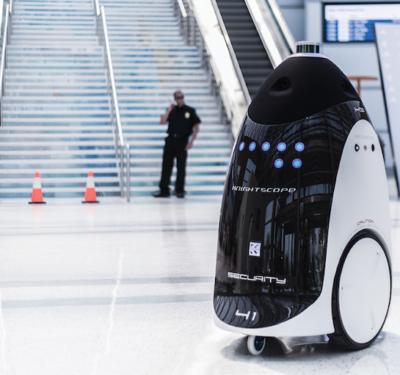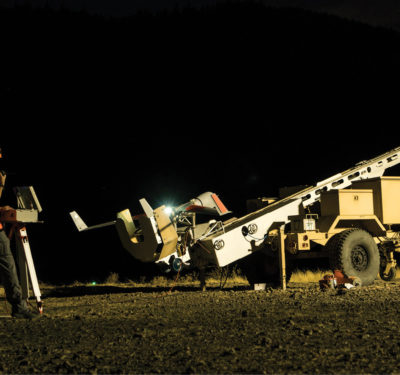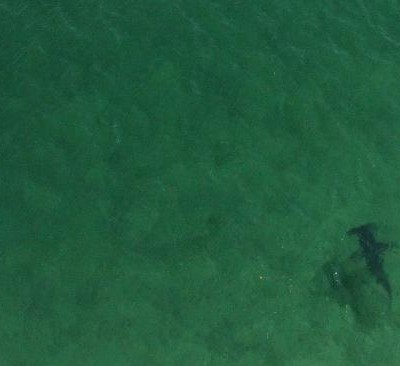
Photo courtesy Northrop Grumman
I couldn’t restrain myself from Tweeting a big “Bravo Zulu” to Boeing a few weeks ago when I saw they were still in the running for the Navy’s MQ-25 “Stingray” carrier-based drone program. I did some consulting work with Boeing several years ago on the Navy’s Unmanned Carrier-Launched Airborne Surveillance and Strike (UCLASS) program and really liked Boeing’s design. It was a great plan for a stealthy, spy/bomber drone that could fly off carriers—a capability our Navy should have had years ago.
I was feeling good about my small role in their success until I read the rest of the article. Apparently, the Navy mutated the UCLASS program into the CBARS program. I had to Google that one. Turns out it stands for “Carrier-Based Aerial Refueling System.” Wait—what? The Navy wants a TANKER drone and not a bomber or spy drone???
I knew immediately what had happened—culture had triumphed over common sense in the drone world. Again.
Uncomfortable Implications
I’ve seen it time and time again. Drones have the easiest time with people who know the least amount about aviation. The folks you THINK would best see the advantages of unmanned aviation—the aviators—are often the toughest sell. And it’s not because they don’t understand the systems. It’s often because they understand them all too well and don’t like the implications.
In the Navy’s case, I’m convinced they’re making their first carrier-based drone a tanker because Naval Aviators saw what drones did to the Air Force fighter inventory and didn’t like it one bit. The Air Force’s MQ-1/Predator that had started out as a sideshow in the Kosovo air war ended up becoming the most famous Air Force aircraft a few months into the Global War on Terror. Air Force budgets reflected this switch. In the mid 2000s, Air National Guard units started converting from fighters and transport units into drone squadrons. The Air Force trained more drone pilots than bomber and fighter pilots combined starting in 2010 and hasn’t let up since. In 2012, a single drone squadron at Creech Air Force Base flew more hours annually than the entire Pacific Air Force. The Navy watched this conversion from manned to unmanned aviation in the Air Force, which was relatively safe because there wasn’t a drone capable of surviving the rigors of carrier aviation. Yet.
After NATO’s air campaign in Libya in 2011, the Navy came under pressure from the Secretary of Defense to develop a carrier-based strike drone. Air Force Predators had to fly 10 hour round trips from NATO land bases, leaving a little over half their fuel for the actual mission. A Navy carrier drone could have performed the missions from minutes offshore versus hours.
However, instead of rushing a carrier drone into production, naval aviation took its time. I’m convinced they did so to allow the pressure to die down from simultaneous operations in Afghanistan, Iraq, the Horn of Africa and Libya to prevent a carrier drone from competing with the naval variant of the F-35 Joint Strike Fighter.
The entire Navy isn’t unmanned adverse, however. The Navy’s carrier aviation experts might be drone doubters but the opposite is true of the oldest warfare community in the Navy—their surface warriors. The Navy’s frigate, destroyer and cruiser commanders have been early adopters of drone technology. Even though the U.S. Air Force had watched the Israeli Pioneer drone shred Syria’s air defenses in the Bekaa Valley Campaign, the first American users of the Pioneer drone weren’t in the U.S. Air Force. The first American Pioneers flew with the Navy’s surface warriors off the battleship USS Iowa in 1986 and they’re still flying with the Navy and Marines. The surface warfare follow-up to the Pioneer was with Northop Grumman’s unmanned Fire Scout helicopter in 2000 and Insitu’s Scan Eagle in 2005. From the late 1980s until today, the leaders in naval unmanned aviation have been the Navy’s Surface Warriors, not her Naval Aviators.
Fighting for Innovation
The Army and Air Force experienced something similar, but with their large intelligence communities as leading drone advocates versus their combat arms or aviation communities. The Army’s Military Intelligence (MI) Corps have enthusiastically supported drones since the late 1970s with their Aquila program. The Army was the second service to fly the Pioneer and I had Pioneers in the MI Brigade I was attached to during Desert Storm in 1991. The famous Predator itself started out as an Army advanced concept, technology development project in the mid 1990s before the Air Force took it over. The Army has drone systems in all levels of combat command, down to the platoon level in some units.
Supported by some innovative fighter generals, the Air Force intelligence, surveillance and reconnaissance (ISR) community was an equally strong supporter of drones. The Kosovo Air War exposed several key Air Force ISR leaders and, more importantly, the future Air Force Chief of Staff (CSAF) John Jumper to the potential advantages of drone warfare. I became a drone fan during Kosovo and fought to have a Predator deployed to Kuwait to help enforce the Iraq no-fly zones. It fortuitously arrived about six months before 9/11, giving us just enough time to learn how to use it. We found the Predator was the only way to monitor constantly mobile Iraqi air defense forces. Luckily, the now CSAF Gen. Jumper had the foresight to order Big Safari (the rapid acquisition office of Air Force ISR) to arm the Predator and it arrived a few days after 9/11. Lt. Gen. Chuck Wald, followed by another future CSAF, Lt. Gen. Buzz Moseley, wielded the armed Predator aggressively in Afghanistan and Iraq, changing air warfare forever.
However, it was Lt. Gen. Dave Deptula who did the most to ensure the Air Force took full advantage of unmanned aviation. Deptula became the chief of Air Force ISR in 2006, a critical juncture in Air Force unmanned aviation. His first move was to take control of the unpopular drone programs from the aviators in the Headquarters Air Force Operations Directorate. Against opposition from his own fighter community, this former F-15 pilot made sure drones transitioned from interesting experiments to a baseline capability of the United States Air Force. Just like Nixon was the only President who could have traveled to communist China, dyed-in-the-wool fighter pilot Dave Deptula was the only general who could convince the Air Force fighter mafia it needed to treat drones like they did any other aircraft. Remote pilot training went from a six-month transition course to a full training track, with an undergraduate pilot training course just like manned aviation. The Predator program transitioned from Big Safari quick reaction management to a permanent program office at Air Force Materiel Command. Air Combat Command treated new requirements for drones just like they did for the F-22 and Joint Strike Fighter. Perhaps most importantly, another fighter pilot drone fan (and former RF-4 reconnaissance pilot) Gen. Ron Keys stopped treating drones as “attritable” (Air Force for landings don’t ALWAYS have to equal take offs) and treated them like “basic aircraft inventory” aircraft (Air Force for “you ding it, you’re FIRED) for safety investigation purposes. The accident rate for Predators went from nine times that of the F-16 to roughly the same about a year after this move. The mafia resisted each one of these changes, but Deptula and his allies managed to out smart them at each turn. I’m convinced we wouldn’t have a viable Air Force drone capability if we didn’t convince our aviation experts (in this case, the fighter mafia) that they had to use their aviation expertise to treat drones like manned aircraft for safety.
Safety Factor
I see this transition playing out all over the commercial drone community. Drone advocacy usually comes from folks with functional expertise versus aviation expertise. Aviators are almost always hesitant to adopt unmanned technology. The reasons the functional and aviation cultures diverge over drones are complex, but the simplest explanation is that functional culture just wants to get the job done and aviation culture just wants to do the job safely. True, manned aviators often oppose drones because they threaten jobs or budgets, but their rational opposition to drones is usually about safety.
Convincing manned aviation experts to use their expertise to solve safety problems and normalize drones in your company (or branch of the armed forces) is an absolutely vital step. Air Force intelligence folks are great, but they’re always going to worry more about drone sensors than drone safety. Navy surface warfare officers are the salt of the earth (sea?) but unless Navy carrier aviators adopt drones, our nation will never solve the considerable safety hazards of carrier operations to give America the sea-based drone strike force we need.
Drone experts often assume they can solve safety with software, but manned aviation experts should remind them there’s no substitute for hundred-year-old aviation safety culture. The Air Force never lost a manned aircraft over Iraq because of maintenance, pilot error or hostile fire during the 11 years of no-fly zone enforcement—not because they had safety software, but because every maintainer, intelligence operator, armaments specialist, weatherman and aircrew supporting operations over Iraq had safety drilled into everything they did. Everyone had checklists, everything was logged and triple checked. We all lived in fear of standards and evaluation personnel suddenly swooping in to find a missed safety step. Even minor accident reports made it up to the wing commander. Major accidents were briefed all the way up to the CSAF. True, drone autonomy software can make unmanned operations much safer than manned aircraft in many cases. However, what good is even the best autonomy software if no one made a safety checklist for the maintenance crews to follow and cracked propellers or worn materials were not replaced?






